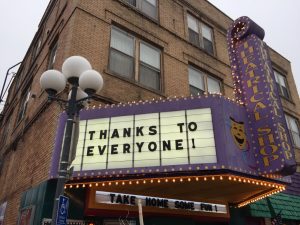Since I am upgrading my website and blog platform, I hope you RESUBSCRIBE. For RESUBSCRIBING, you will receive my FREE e-book “I Get By With A Little Help From My Friends.” This e-book is about WHY leaders need to build community in workplaces and HOW to build it. Thank you in advance for helping me in this way.
If you want to continue receiving my content and remain part of my database, you will need to resubscribe. Please do this soon or you will be deleted from the database in the upgrade process.
Recently, I presented a research paper on “How To Become More Resilient.” So resilience has been on my mind. For my next few blog posts, I am going to share what I have learned about this topic. In my book, Leading with Wisdom: Sage Advice from 100 Experts, one of the themes that emerged from the interviews was “Leaders Model Resilience.”
Why is this important for leaders to understand?
We are clearly living in uncertain, unprecedented times that include stress, pressure, and dissonance. If the most important person to lead is ourselves, then we need to learn new behaviors and practices that help us address these challenges.
George Bonanno, a clinical psychologist at Columbia’s Teachers College and heads up the Loss, Trauma, and Emotion Lab, has been studying resilience for about 25 years. He says one of the central elements of resilience is perception.
According to Bonanno:
“Do you conceptualize an event as traumatic or as an opportunity to learn and grow? Events are not traumatic until we experience them as traumatic. He has coined the term PTE or potentially traumatic event. If you perceive it as traumatic, it is traumatic. “We make ourselves more or less vulnerable by how we think about things–to reframe them in positive terms when the initial response is negative. And the opposite is true. We can become less resilient if we exaggerate stressors. It is a self-fulfilling prophecy. Frame adversity as a challenge and you become more flexible and able to deal with it, move on, learn from it, and grow. And the opposite is true. Focus on it, frame it as a threat, and a potentially traumatic events becomes an enduring problem; you become more inflexible, and more likely to be negatively affected.”
In my workshops, I often share a story that is included in my book Leading with Wisdom because of the focus on perspective. Anna Quindlen, in her book A Short Guide to a Happy Life, (the book was the result of a commencement speech Quindlen gave at Villanova in 2000) tells the personal story of how she found one of her best teachers on the boardwalk at Coney Island several years ago.
It was December and she was working on a story about how the homeless suffer in the winter. She sat down on the edge of the boardwalk next to a man who told her how he slept in a church when the temperature was cold and panhandled the crowd during the summer months. He would hide from the police in the Tilt-A-Whirl and some of the other rides. But he told her that most of the time he stayed on the boardwalk, facing the water, and when it got cold he had to wear his newspapers after he read them. She asked him why he didn’t go to one of the shelters. She asked him why he didn’t check himself into the hospital for detox. And he stared out at the ocean and said, “Look at the view, young lady. Look at the view.”
Quindlen said, “And every day, in some little way, I try to do what he said. I try to look at the view. Words of wisdom from a man with not a dime in his pocket, no place to go, nowhere to be. Look at the view. You’ll never be disappointed.”
During this holiday season, remember to “look at the view.” Remember that I am grateful you are reading my blog and finding ways to share it with others.
Thanks to Everyone!


[…] the past few months, I blogged about resilience so this topic has been on my mind. I was also reading this book during the weeks of the Olympics […]